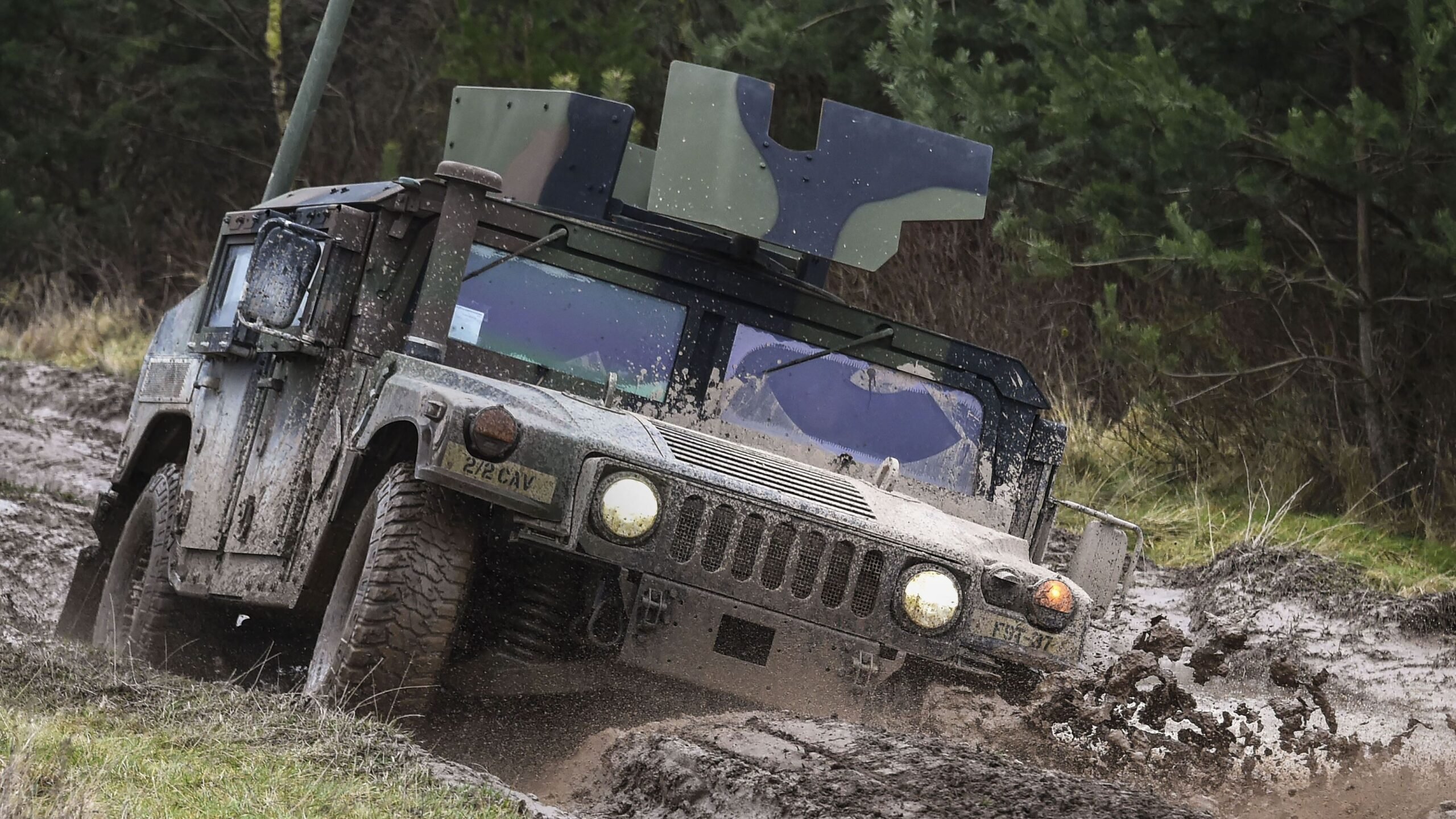
Soldiers maneuver a HMMWV at the 7th Army Training Command’s Grafenwoehr Training Area, Germany. (Photo by Gertrud Zach, US Army)
GVSETS — Already aiming to mass produce a 3D-printed battery bracket for the M998 High Mobility Multipurpose Wheeled Vehicle (HMMWV), the US Army is now interested in using additive manufacturing to crank out other components for the classic platform.
“We are looking for more using cases. We are looking for manufacturing partners. Our plan is to expand consideration to other parts,” Eric Wetzel, team leader for the project at the US Army Research Lab, said Tuesday during the 15th Annual Ground Vehicle Systems Engineering & Technology Symposium, in Novi, Mich.
The future HMMWV’s additive manufactured components should be available for Army expeditionary production after being approved in range and quality trials.
The Army is hardly the only service that sees a future in additive manufacturing for simplifying logistics and reducing downtime for platforms. Earlier this month Breaking Defense reported exclusively on a Navy ship that 3D-printed a part that the service estimates saved it nearly a half-million dollars and kept the ship at sea rather than having to come in for repairs.
For the Army, the 3D-printed battery bracket designed for the M998 was produced using fused filament fabrication (FFF) technology followed by a post-annealing process in order to ruggedize the parts, the service said. The development process used two approaches aiming at eliminating slump and creep during annealing in addition to preserving part geometry.
The US Army Research Lab tested the deployment of a high-temperature support shell and building the components out of a filament that includes both a low-temperature, annealable phase, and a higher-temperature phase to stabilize the part during annealing.
Launched three years ago, the study to design and produce the HMMWV’s components involved three filament types and three different printers to make comparative bracket quarter-sections. Trials with the 3D-printed parts were conducted in eight processing conditions.
The data collected through the evaluations suggests that annealing — a kind of heat treatment to subtly soften a metal — is an effective strategy to increase the mechanical robustness of 3D printed parts and shell annealing is an effective approach. Based on the outcomes of the tests, full-size brackets will be printed using dual material. The components will be installed on HMMWVs and field tested with the Maryland Army National Guard.
The 3D printed battery bracket for the M998 “is planned to replace the standard aluminum bracket battery, which the army is trying to phase out,” Wetzel said.
The branch has been paying great attention to 3D-printing capabilities and in April established the Advanced Manufacturing Commercialization Center (AMCC), in Sterling Heights, Mich.
AMCC is dedicated to exploring new additive manufacturing options and will produce large parts for various ground vehicles.It is intended to enable the Tank-Automotive & Armaments Command (TACOM) and the Ground Vehicle Systems Center (GVSC) to increase the speed of fielding new advanced manufacturing capabilities.






















